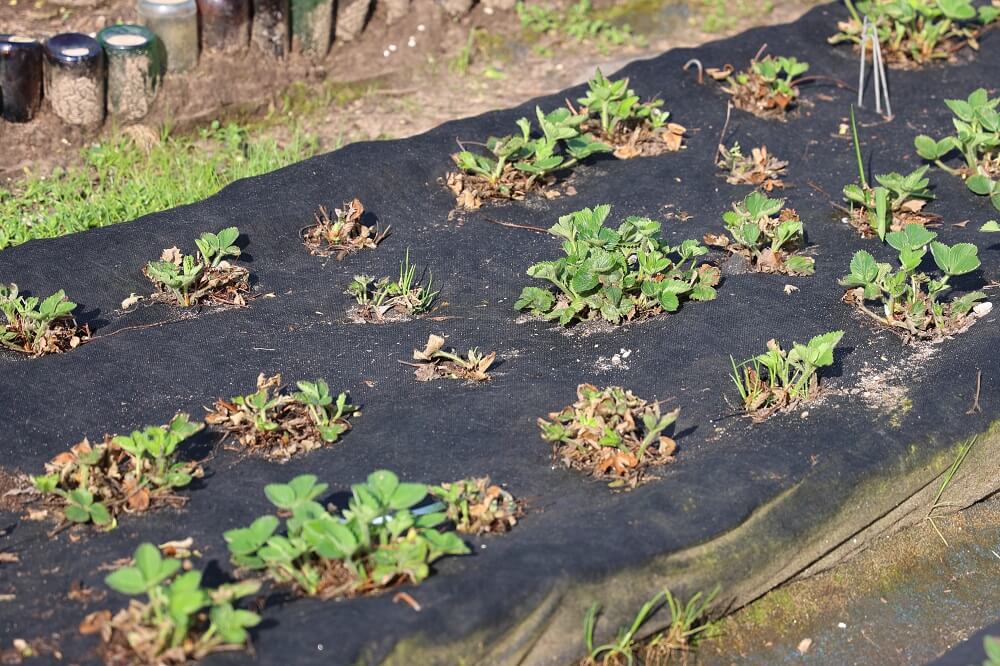
Preparing the land before laying the agro-textile is a key step that affects its effectiveness and durability. In order to properly lay down agro-fibreThe ground should be cleared of all stones, weeds and other obstructions. The area should be carefully cleared so that the agro-textile can adhere thoroughly to the ground, minimising the risk of weed overgrowth and damage to the material. It is worth paying particular attention to plant roots, which can interfere with the agro-textile in the long term.
Once the area has been cleared, it is worth levelling the surface, removing any unevenness that may affect the effectiveness of the agro-textile. A well-prepared surface will ensure the stability and long-term performance of the agro-textile. If the ground is very dry, it can be slightly moistened, which will help the agro-textile to adhere better to the soil. A surface prepared in this way will allow the agro-textile to spread effectively, which in turn will protect the plants from weeds and moisture loss.
As we mentioned earlier, it is crucial to prepare and secure the material properly to prevent landslides. Once this is done, the agro-textile can be unrolled from the top of the slope downwards, while it should be well tensioned and shaped to the terrain. To further secure the agro-textile against sliding, it is a good idea to use strong pins or pegs to fix the material at regular intervals, especially on the edges and where the slope changes slope. Well-fixed edges prevent it from moving and being undermined by the wind. The agro-textile is installed so that at the joints of the individual sheets, they overlap by about 10–15 cm, which provides additional stability and protection against weeds. With proper installation, the plants can grow properly and the soil is effectively protected against erosion and weed overgrowth.
Laying agro-textile fabric under shrubs and thuyas is an important part of caring for plants in the garden, affecting their healthy growth and development. The process starts with the precise spreading of the nonwoven agro-textile on the surface prepared beforehand. The agro-textile should be spread evenly, ensuring that it covers the entire area where the plants are to be planted. A key step is to cut the material properly to suit the shape and size of the planting area. Holes should be cut where the shrubs and thuyas will be located to allow them to grow freely. It is important that the holes are large enough not to restrict root space, but at the same time not too large to minimise light access for weeds. Once the holes have been cut, the agro-textile is fixed to the ground with special pegs or pins, which prevents it from moving under the influence of wind or mechanical action. Once the agro-textile is secured, the planting of shrubs and tui can proceed in the designated areas. Finally, for aesthetics and additional protection, the area can be covered with a layer of bark or gravel, which will further impede weed growth and keep the soil moist.
The best way to permanently fix the agro-textile is to use strong pins or pegs, which should be placed at regular intervals, especially at the edges and where the material comes into contact with the plants. These should be driven deep into the ground to hold the agro-textile in place even in strong winds.
Regular maintenance mainly involves removing any dirt, such as fallen leaves, twigs and other plant debris that may accumulate on the surface of the agrotextile. Every few months it is worth checking the condition of the pins and pegs and replacing them if you notice any defects. In this way, the agro-textile will serve effectively for many years, protecting the soil and plants from unwanted weeds.
Firstly, failure to thoroughly clean the ground before laying the agro-textile can lead to damage by stones or roots left behind. To avoid this, carefully remove all obstacles from the ground. Another mistake is not carefully levelling the surface, which can result in unevenness and poor adhesion of the agro-textile to the soil. Another common problem is the incorrect fixing of the agro-textile. Too few pins or pegs can lead to the agro-textile moving in the wind. It is important to fix the material at regular intervals, paying particular attention to edges and corners. Many users also forget to overlap the agro-textile sheets to provide better protection against weeds. Following these rules will maximise the effectiveness in protecting plants and soil.